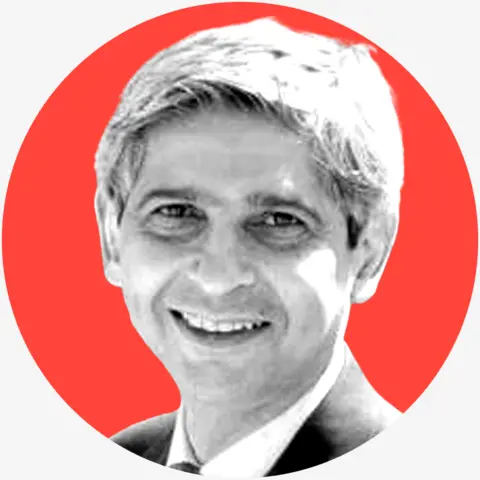
Special Correspondent, BBC Persian
 BBC
BBCAfter spending nearly two weeks in a secret bunker somewhere in Iran during his country’s war with Israel, the supreme leader, Ayatollah Ali Khamenei, 86, might want to use the opportunity of the ceasefire to venture out.
He is believed to be holed up, incommunicado, for the fear of being assassinated by Israel. Even top government officials apparently have had no contact with him.
He would be well advised to be cautious, despite the fragile ceasefire that the US President Donald Trump and the Emir of Qatar brokered. Though President Trump reportedly told Israel not to kill Iran’s supreme leader, Israeli Prime Minister Benjamin Netanyahu did not rule it out.
When – or indeed if – he does emerge from hiding, he will see a landscape of death and destruction. He will no doubt still appear on state TV claiming victory in the conflict. He will plot to restore his image. But he will face new realities – even a new era.
The war has left the country significantly weakened and him a diminished man.
Murmurs of dissent at the top
During the war, Israel quickly took control of much of Iran’s airspace, and attacked its military infrastructure. Top commanders of the Revolutionary Guard and the army were swiftly killed.
The extent of the damage to the military is still unclear and disputed, but the repeated bombings of the army and revolutionary guard bases and installations suggests substantial degradation of Iran’s military power. Militarisation had long consumed a vast amount of the nation’s resources.
Iran’s known nuclear facilities that earned the country nearly two decades of US and international sanctions, with an estimated cost of hundreds of billions of dollars, are now damaged from the air strikes, although the full extent of this has been hard to assess. What was it all for, many are asking.
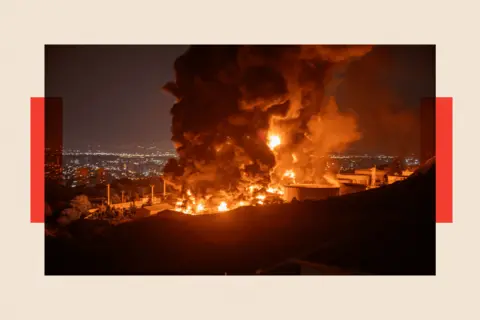 Getty Images
Getty ImagesA vast number of Iranians will singularly hold Ayatollah Khamenei, who first became leader in 1989, responsible for setting Iran on a collision course with Israel and the US that ultimately brought considerable ruin to his country and people.
They will blame him for pursuing the ideological aim of destruction of Israel – something many Iranians don’t support. They will blame him for what they perceive as a folly – his belief that achieving nuclear status would render his regime invincible. Sanctions have crippled the Iranian economy, reducing a top oil exporter to a poor and struggling shadow of its former self.
“It is difficult to estimate how much longer the Iranian regime can survive under such significant strain, but this looks like the beginning of the end,” says Professor Lina Khatib, a visiting scholar at Harvard University.
“Ali Khamenei is likely to become the Islamic Republic’s last ‘Supreme Leader’ in the full sense of the word.”
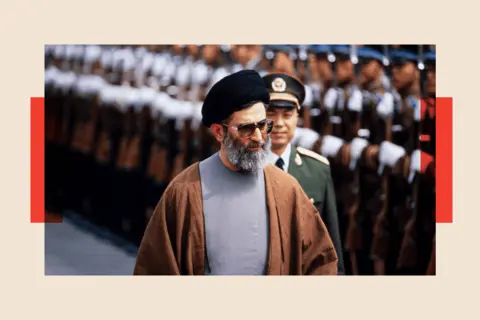 Getty Images
Getty ImagesThere have been murmurs of dissent at the top. At the height of the war, one semi-official Iranian news agency reported that some top former regime figures have been urging the country’s more quiet religious scholars based in the holy city of Qom, who are separate to the ayatollah, to intervene and bring about a change in leadership.
“There will be a reckoning,” according to Professor Ali Ansari, the founding director of the Institute of Iranian Studies at the University of St Andrews.
“It’s quite clear that there are huge disagreements within the leadership, and there’s also huge unhappiness among ordinary people.”
‘Anger and frustration will take root’
During the last two weeks, many Iranians wrestled with conflicted feelings of the need to defend their country versus their deep hatred of the regime. They rallied for the country, not by coming out to defend the regime, but to look after each other. There have been reports of vast solidarity and closeness.
People in towns and villages outside urban areas opened their doors to those who had fled the bombardments in their cities, shopkeepers undercharged basic goods, neighbours knocked on each other’s doors to ask if they needed anything.
But many people were also aware that Israel was probably looking for a regime change in Iran. A regime change is what many Iranians wish for. They may draw the line on a regime change engineered and imposed by foreign powers, however.
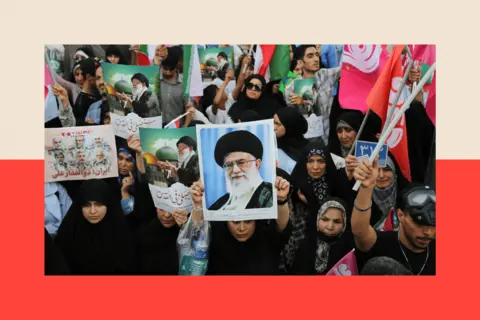 Getty Images
Getty ImagesIn his nearly 40 years of his rule, Ayatollah Khamenei, one of the world’s longest reigning autocrats, has decimated any opposition in the country. Opposition political leaders are either in jail or have fled the country. Abroad, the opposition figures have been unable to formulate a stance that unites the opposition to the regime.
They have been ineffectual in the establishment of any semblance of an organisation able to take over inside the country if the opportunity arises.
And during the two weeks of war, when the collapse of the regime could have been a possibility, if the war went on relentlessly, many believed the likely scenario for the day after was not the takeover by the opposition, but the descent of the country into chaos and lawlessness.
“It is unlikely that the Iranian regime will be toppled through domestic opposition. The regime remains strong at home and will ramp up domestic oppression to crush dissent,” says Prof Khatib.
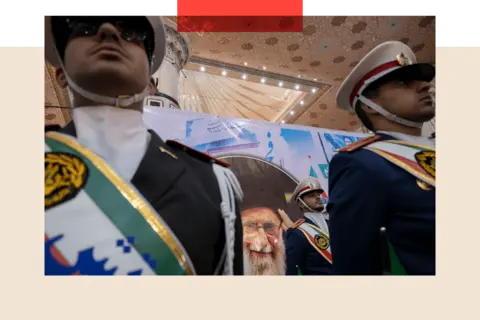 Getty Images
Getty ImagesIranians are now fearing further clampdown by the regime. At least six people have been executed in the past two weeks since the start of the war with Israel on charges of spying for Israel. Authorities say they have arrested some 700 people on this charge.
One Iranian woman told BBC Persian what she fears more than the death and destruction of the war is a regime that is wounded and humiliated turning its anger against its own people.
“If the regime is unable to supply basic goods and services, then there will be growing anger and frustration,” says Prof Ansari.
“I see it as a staged process. I don’t see it as something that, necessarily, in a popular sense, will take root until long after the bombing is over.”
Few people in Iran think that the ceasefire brokered on Monday will last – and many believe Israel is not yet finished now that it has total superiority in the sky over Iran.
Iran’s ballistic missile silos
One thing that seems to have escaped the destruction are Iran’s ballistic missile silos that Israel found hard to locate as they are placed in tunnels under mountains throughout the country.
The Israeli Defense Forces Chief of Staff, Eyal Zamir, said Israel launched its opening attack on Iran knowing that “Iran possessed around 2,500 surface-to-surface missiles”. The missiles that Iran fired caused considerable death and destruction in Israel.
Israel will be concerned about the remaining possible 1,500 still in the hands of the Iranian side.
There is also a serious concern in Tel Aviv, Washington and other Western and regional capitals that Iran may still rush to build a nuclear bomb, something it has continued to deny trying to do.
 Getty Images
Getty ImagesAlthough Iran’s nuclear facilities have almost certainly been set back, and possibly rendered useless during the bombings by Israel and the US, Iran said it had moved its stockpile of highly enriched Uranium to a safe secret place.
That stockpile of 60% Uranium, if enriched to 90%, which is a relatively easy step, is enough for about nine bombs, according to experts. Just before the war started, Iran announced that it had built another new secret facility for enrichment that was due to come on stream soon.
The Iranian parliament has voted to sharply reduce its cooperation with the UN’s atomic watchdog, the International Atomic Energy Agency (IAEA). This still requires approval, but if it passes Iran would be one step away from exiting the nuclear non-Proliferation Treaty, the NPT – as hardliners supporting the supreme leader push for Iran’s breakout to build a bomb.
Ayatollah Khamenei may now be confident that his regime has survived, just. But at the age of 86 and ailing, he also knows that his own days may be numbered, and he may want to ensure continuity of the regime with an orderly transition of power – to another senior cleric or even a council of leadership.
In any case, the remaining top commanders of the Revolutionary Guard who have been loyal to the supreme leader may be seeking to wield power from behind the scenes.
Top image credit: Pacific Press via Getty
BBC InDepth is the home on the website and app for the best analysis, with fresh perspectives that challenge assumptions and deep reporting on the biggest issues of the day. And we showcase thought-provoking content from across BBC Sounds and iPlayer too. You can send us your feedback on the InDepth section by clicking on the button below.









